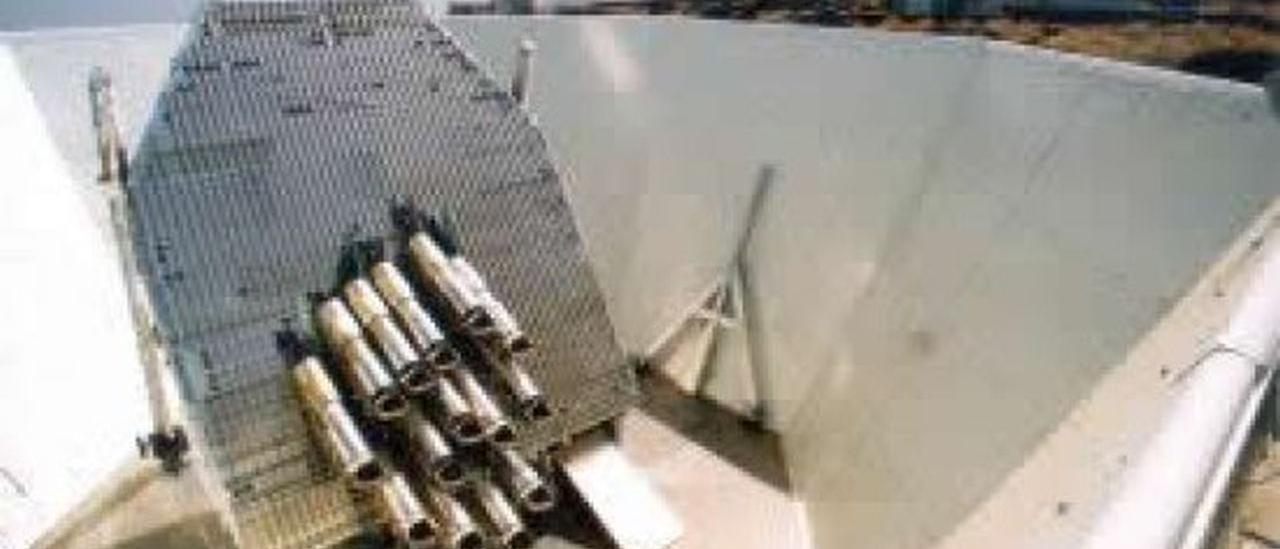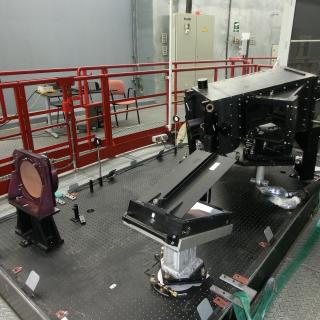Subvenciones relacionadas:
General
The VSA is a 14-element heterodyne interferometer array, tuneable between 28 and 36 GHz with a 1.5 GHz bandwidth and a system temperature of approximately 30K, sited at 2400 m altitude at the Teide Observatory in Tenerife. Each receiving element consists of a corrugated horn-reflector antenna (CHRA) feeding a cooled HEMT amplifier. The CHRA consists of a conical corrugated horn feeding a section of a paraboloidal mirror at 90º to the paraboloid axis. This arrangement gives a compact antenna with an unblocked aperture, and hence low sidelobes. The mirror can be rotated about the axis of the feedhorn, allowing tracking in one dimension. The receivers are mounted on a tilting table hinged along its northern edge, providing tracking in a second dimension. In order to achieve close packing of the antenna apertures, the receivers are mounted at an angle of 35º to the table; the elevation range of the table of 0º-70º thus gives a range of zenith angle of 35º in the north-south direction, with the rotating mirrors providing approximately +/- 45º in the other axis. The array is surrounded by an aluminium ground screen to limit interference and groundspill; the internal sides are sloped to direct rays from the table into the sky. We propose to upgrade the main array of the VSA and increase its observing speed by a factor of 10 by fitting it with a broadband IF and correlator system and by replacing the transistors in the frontend amplifiers with the best currently available technology. Designs of the hardware required for this programme already exist and have been built into a similar interferometer operating at 15GHz at the Cav laboratory (AMI). The process of design and manufacture has been proven of all the components necessary for the upgrade. This non-trivial project has been carried out by Cav over the last 2-3 years using British manufacturing or in-house processes to carry out the design and build. In 2005, this project has been temporarily suspended due to the lack of funds of one of the main partners. It is hoped that all will be ready in 2006.
Miembros
Actividad científica
Publicaciones relacionadas
No se han encontrado publicaciones relacionadas.Charlas relacionadas
No se han encontrado charlas relacionadas.Congresos relacionados
No se han encontrado congresos relacionados.Noticias
No se ha encontrado ninguna noticia relacionada.



